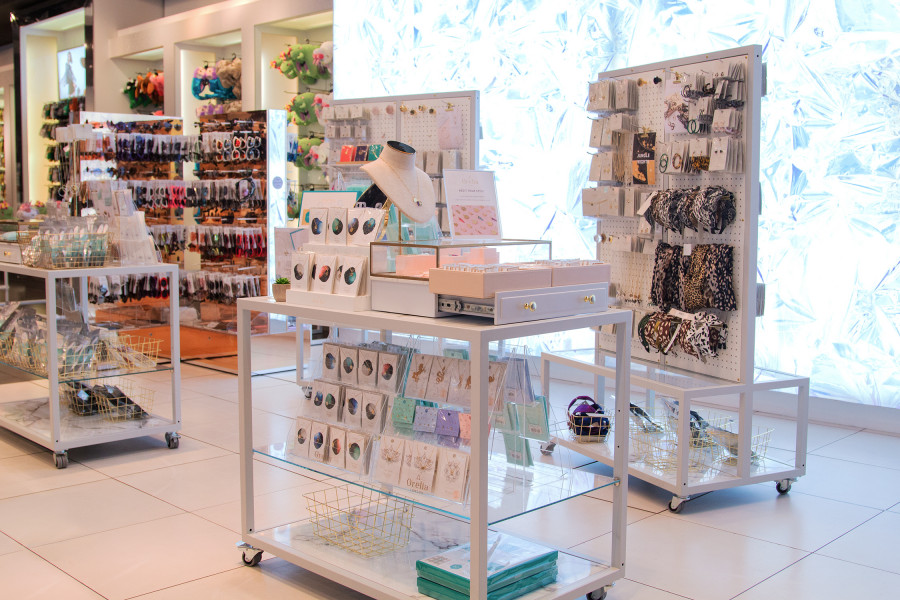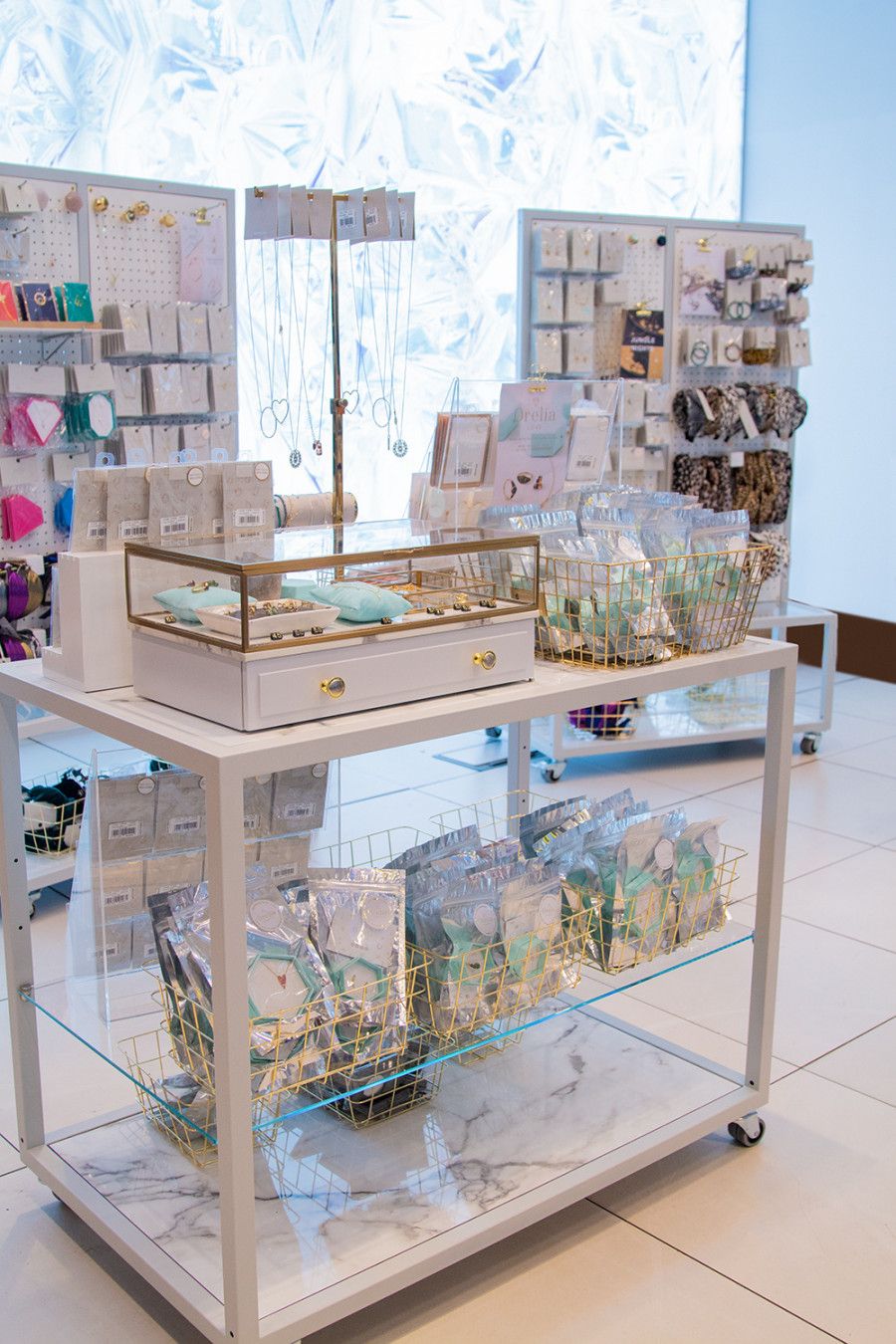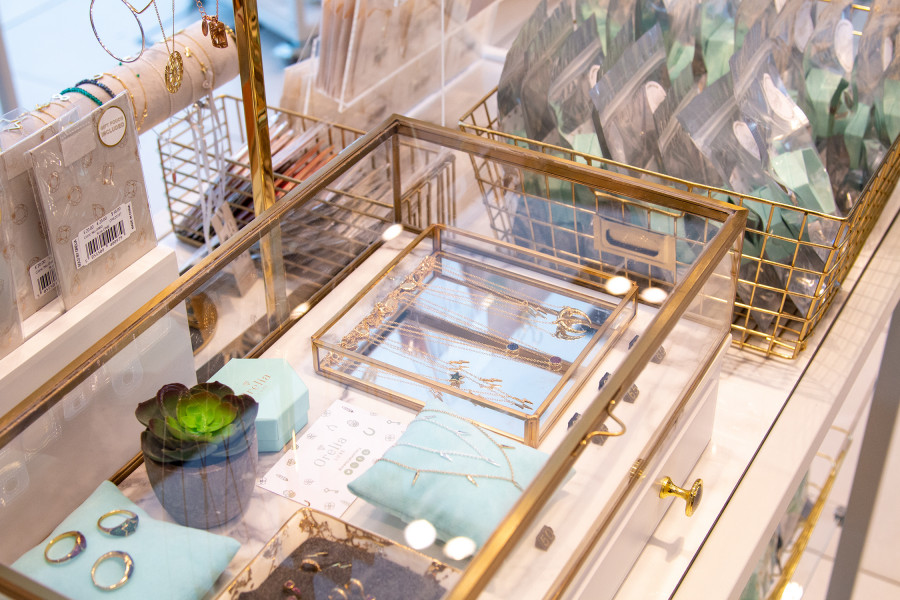Orelia
Case Study

Brand: Orelia, a Brighton-based British brand who creates beautiful jewellery, accessories and clothing.
The brief: To create Concessions and Wholesale fixtures that hero the products and allow interesting visual merchandising product presentation and display
Northbanks solution: A SKU efficient suite with a combination of flexible vertical and horizontal surfaces that allow for more creative ways to display mostly packaged jewellery and new category accessories.
Visual merchandising adds value to products by displaying them in a way that not only better exhibits the product, but can also achieve other goals – such as elevating the products so that they look more premium. This is important for a couple of reasons: Firstly, to introduce higher price point merchandise (and ranges with better margins), VM is used to better align the product with more premium jewellery brands. This raises the perception and matches the customer expectation associated with higher-priced accessories. Secondly, as current product ranges expand, they also need to look desirable and be displayed in a suitable manner.
Overall, our client wanted to better connect with their brand followers, whilst also being perceived as more upmarket but still great-value, along with providing a better customer experience and the journey that would bring about better shopper satisfaction, brand perception and image, and of course, increased sales and profitability.
The new horizontal surfaces allow for a more traditional display, paired with glass showcases with POS, T-stands, neck busts and gold wire bins. All these styles of display are reminiscent of higher-end brands and give the shopper visual cues to identify the brand in a similar league.
The vertical merchandising is made more flexible with custom-made metal pegboards that can support shelves, various prongs and even vintage drawer pulls that help adds the brand’s distinct character to the displays. These features and systems allow more flexibility and future-proof fixtures. Brands are always evolving and so the VM supports these changes, allowing the bar to be raised and exceeding customer expectations.
The best ‘real estate on furniture is at eye or countertop level but space constraints and capacity requirements invariably mean the Visual Merchandiser must also utilise lower and upper areas of fixtures. Skill is required to draw attention to areas that would otherwise be overlooked. The art of VM is to guide the customer’s journey by catching their eye and creating a ‘grammar’ where the product presentation is ‘read’.
Our client’s customers really related and connected with the new fixtures and style of VM, which in turn increased brand exposure and ultimately sales. It really shows that great VM has a positive and tangible impact on sales and brand image.


